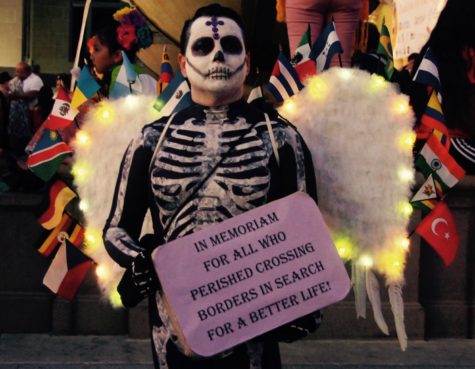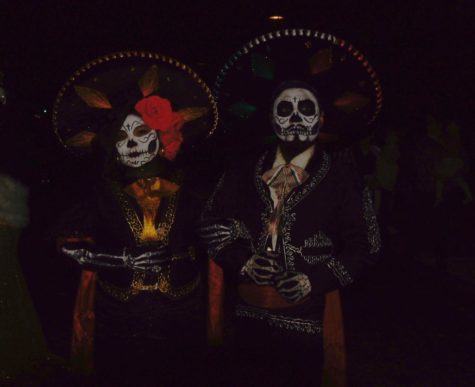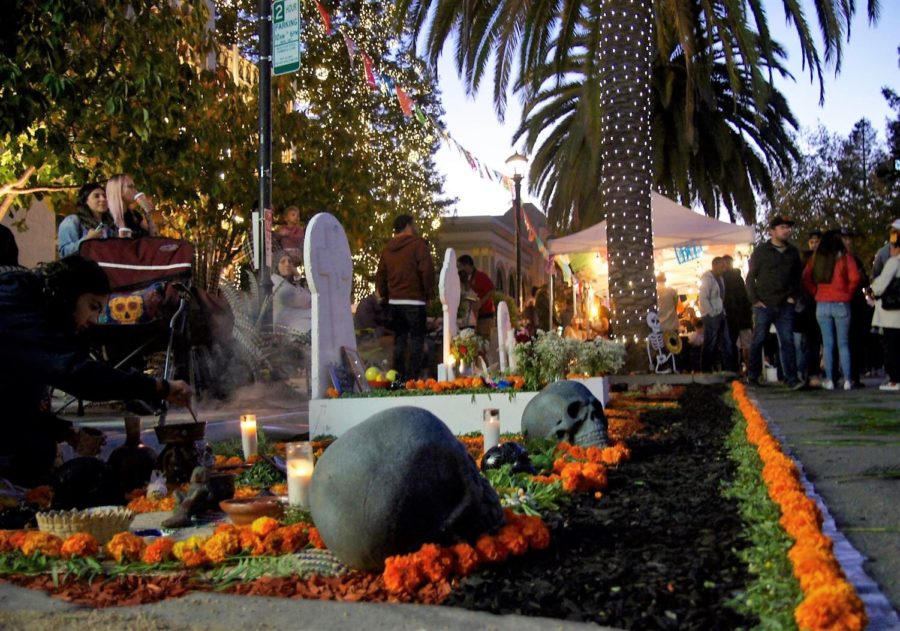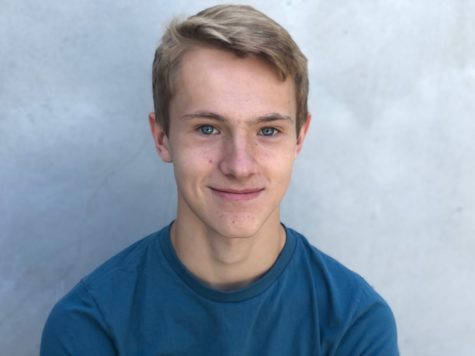Downtown Redwood City during the weekend is everything one would expect from a small city. People eat at various restaurants, while a constant stream of people flows in and out of the movie theaters. However, Sunday night was not one of those ordinary nights.
On the night of Nov. 4, Courthouse Square was transformed into a Mexican village for the Día de Los Muertos Festival. The typical low murmur of people talking about the new movie they just saw was replaced with a mix of conversation in both Spanish and English, blended with the sound of a band performing traditional Mexican music. The ever-present smell of buttery popcorn wafting out of the movie theater was replaced with the aromas of traditional Mexican food and burning incense.

Despite the festive mood, one person dressed as a calaca and held a sign that reminded others of the struggles that immigrants endure.
Día de Los Muertos is a multi-day holiday that usually takes place around the time of Nov. 1. Families and friends gather to remember and pray for their loved ones who have died. Common traditions that are performed during the holiday include decorating private altars, called ofrendas, with Aztec marigolds and the favorite foods and beverages of the departed. The marigolds were thought to help guide the dead back to the land of the living. Many who celebrate the holiday also honor the deceased by dressing up as calacas, or skeletons, and visiting graves with gifts.
For the 7th annual Redwood City Día De Los Muertos Festival, an astonishing 10,000 people attended.
“We made it [the festival] very family oriented … there was no alcohol at all,” said Veronica Escámez, founder of Casa Circulo Cultural, one of the organizations who helped with the organization and execution of the festival.
The event was organized by Casa Circulo Cultural, San Mateo County History Museum, Friends of the Library, and the Redwood City Parks and Arts Foundation.
“We tried to make it [the festival] look like a small Mexican town,” Escámez said.
The streets were lined with stalls selling art, jewelry, and clothing. There was also a food plaza where traditional Mexican food was sold. Other stalls offered activities, such as making sugar skulls or face painting.

Two people participed in Matteo Leon-Valencia’s Pan de Vida and dressed as calacas.
In the streets, there were people with elaborate face paint and traditional Mexican costumes that made them look calacas. Matteo Leon-Valencia, a Redwood City native and a local Bay Area artist, found a unique way to express his enthusiasm for the Day of the Dead traditions. He has taken the idea of calacas and turned it into what he calls a “living art exhibit” where volunteer models dress up in elaborate calaca costumes.
Leon-Valencia’s goal is to spread the cultural significance of Día de Los Muertos in exhibits he calls Pan De Vida.
Leon-Valencia said: “[I came to the festival because] Redwood City is my hometown. I now reside in Newark, [but] I like to make my way back to my roots and join in the festivities while still keeping [my] tradition [alive] and honoring my loved ones.”
For many, respect for those who passed on and celebration of an important tradition were the reasons for attending the festival. Altars, also known as ofrendas, with photographs, incense, and bright orange marigolds lined the streets to commemorate the loved ones who have passed on.
Leon-Valencia said: “Día de Los Muertos is a time for us to reflect on the lives that we have lost. It is not a time to be sad although sometimes it is inevitable. Tt is a time to honor and celebrate the relationship between life and death.”


